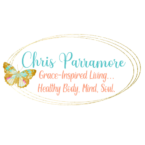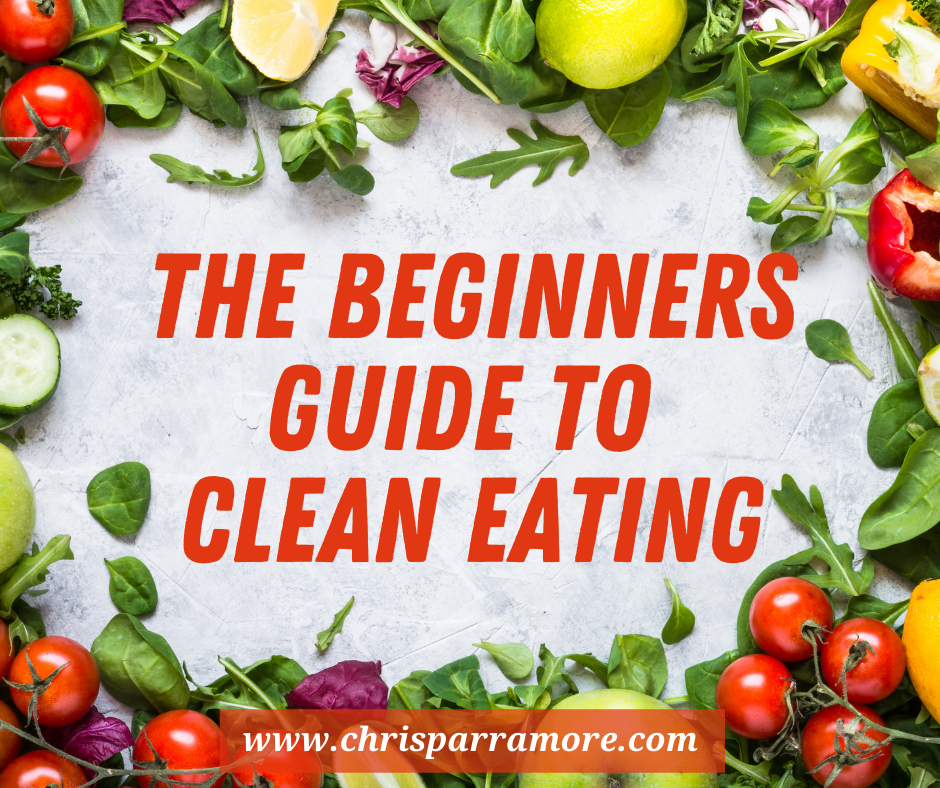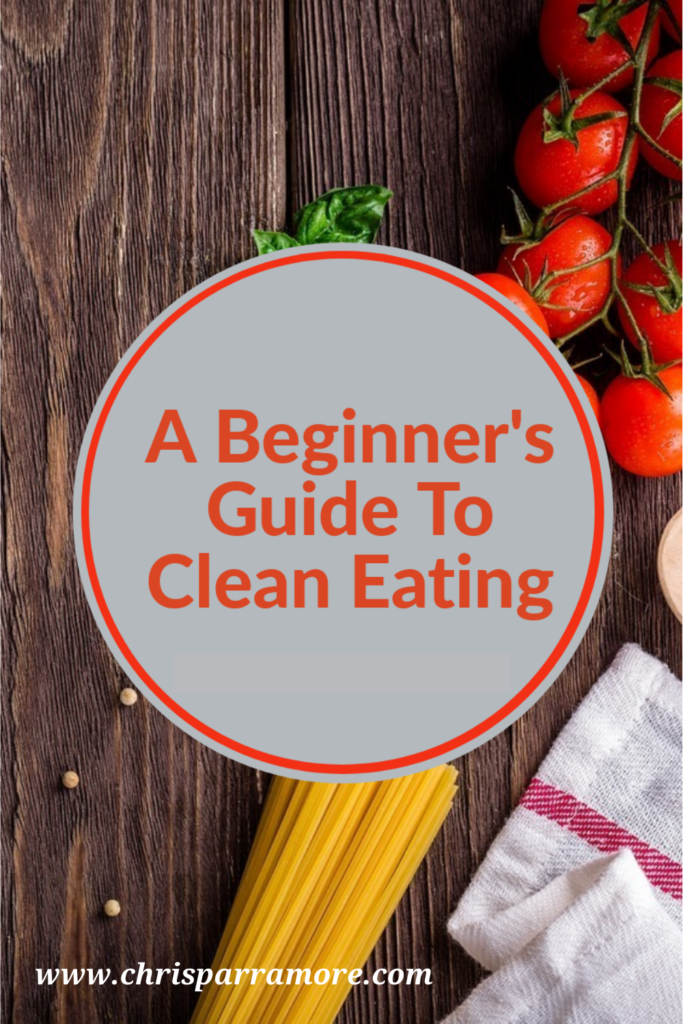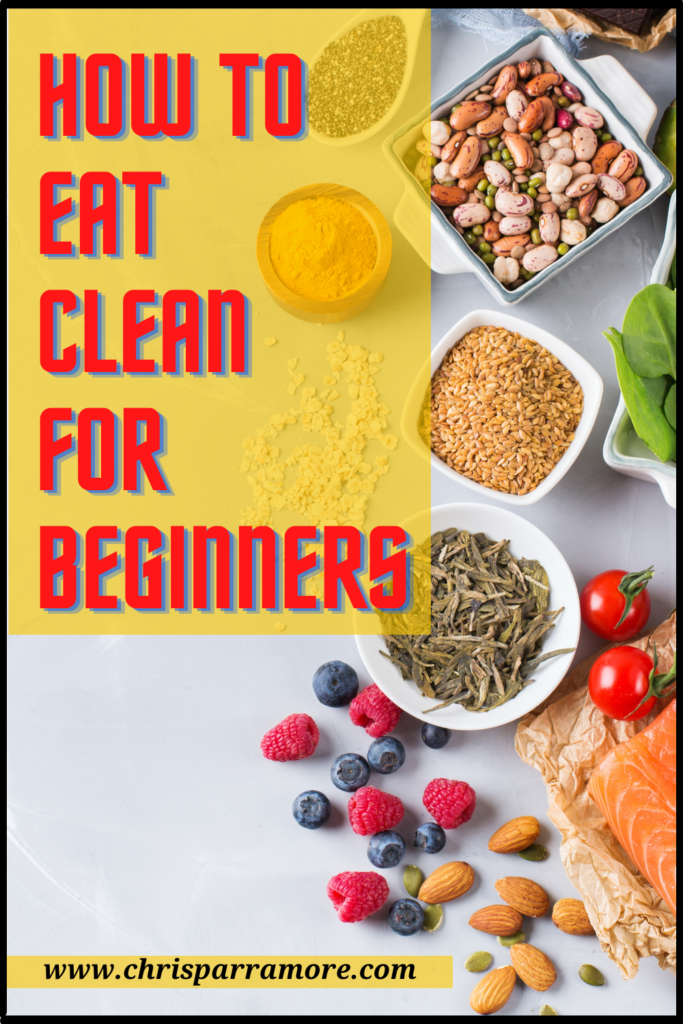“Clean eating” is a popular topic these days. Maybe you’ve heard of it but didn’t know exactly what it was or how to go about it. This beginners guide to clean eating will answer those questions and give tips to help you get started. Basically, it’s a lifestyle choice focusing on a diet of good nutritional foods that leads to better overall health and wellness. Eating the right foods can be a source healing for our bodies, as well as being pleasurable.
At one time the thought of changing my eating habits, cooking and eating healthier sounded difficult. About 8 years ago I found myself about 15 pounds overweight, having digestive problems, low energy, and just not feeling great. I knew something had to change, and that would have to be the way I was eating. I researched diet plans and found something that was perfect for my husband and I at the time. It got us on track with eating healthier foods. We both lost weight and felt better.
I’ve been focusing on clean eating this past year, and it’s really about choosing the right types of foods. I’ve researched and found a wealth of information on clean eating, good nutrition, meal plans, and recipes. I will be sharing tips on things I’m doing on my journey and it’s my hope to help you with creating a healthier lifestyle as well.
What Is Clean Eating?
Simply put, clean eating is consuming real, whole foods in their most natural, unprocessed form. It’s important to figure out what types of foods to include in your daily diet and which ones to eliminate. Real food is fresh, natural, and simple. Cleaning up your diet means cutting out processed foods, bad fats, and refined carbs. It’s staying away from “junk foods” and sugars, preservatives, and additives. Once you get started, you will find you’re not craving those sugars, salts, and “junk foods” like you used to.
Clean eating is not a diet, but a lifestyle change. It’s being intentional about what types of food you are putting into your body. You may lose some weight, but it won’t be from counting calories and depriving yourself from good foods. This is about the quality of the foods you are eating and the nutritional value provided for your body. There are some varying ideas on clean eating. For me it’s about finding simple, practical ways to provide good nutritional food for myself and family in the most natural ways.
How To Get Started Eating Clean
Getting started with eating clean involves planning ahead for meals and snacks. It is necessary to stock your kitchen with the right kinds of foods. Make a list of healthy foods to buy before you go to the grocery store. Foods to include are fresh fruits and vegetables, healthy fats, whole grains, fish, and grass fed meats. There are things that can be prepared ahead of time for meals to make mealtime go smoother. And when it comes to snacks, it’s good to have something healthy to grab.
Take it slow if you need to, and just start with small, simple changes. It depends on where you are starting from on your nutritional journey, as to how you get started. If you rarely drink water, you may need to replace your other drinks with glasses of water. Try a bit of honey in your tea or coffee instead of sugar. Swap out some of the processed foods you eat for healthier options. Switch to whole grain breads and pastas. As you begin making positive choices for nutritious foods, it becomes easier and more of a daily practice.
Tips for Success With Clean Eating
To be successful with eating healthy and following the clean eating lifestyle there are some important guidelines to follow. Use these tips to help you get started.
1. Buy and Eat Whole Foods.
Whole Foods are fresh vegetables and fruits, whole grains, lean proteins, full fat dairy products, beans, lentils, nuts or seeds. These are foods that are in their most natural form and haven’t been processed or refined, and don’t have added sugars, salts, fats, preservatives, or artificial colors. These foods have not been modified, therefore they have more of the essential nutritional benefits that your body needs to stay healthy. Adding more fresh fruits and vegetables has so many wonderful health benefits, and we often don’t eat enough of these. As well as being delicious additions to meals, they also make quick and yummy snacks.
2. Go Whole Grain
Go with whole grains because they are less processed and closest to their most natural state. Choose whole-grain breads and pastas, brown or wild rice, quinoa, and oats. Exchanging refined carbs like white breads and pastas for whole grains adds more fiber and nutrients to your diet. Swap out refined white flour to healthier options like whole wheat, oat, or coconut flours. And buy the unbleached flour. When you buy, be sure to check the ingredients on the label. Whole grains should be the first ingredient and the list should be short and understandable.
3. Limit or Eliminate Sugar
To clean up your diet you need to limit your sugars. We naturally think of sweets, such as baked goods, candy, and sodas. But so many other foods have added sugars so it’s important to look at the labels. Sugar should not be listed at the top of the ingredients list. Watch out for foods we think of as healthy, like yogurt and cereals because they can have a lot of sugar added. Naturally occurring sugars you get in fruits and dairy provide nutrition and can be a sweet treat. When I want to sweeten foods, I look for healthier alternatives rather than refined sugar, like honey, agave syrup, and pure maple syrup.
4. Good Protein Sources
When choosing proteins, organic grass-fed meats, organic chicken, and wild caught seafood are healthy options. Also beans, peas, lentils, nuts, and seeds are healthy protein choices. Eggs are an excellent protein source. Full fat dairy products can also be good protein sources, just be sure to check labels and look for things with no sugar added.
5. Buy Organic or Minimally Processed
There are some clean foods you can buy that are minimally processed. Cheeses, plain yogurt, whole-wheat pasta are examples of these. You can also find clean varieties of salad dressings and sauces if you don’t want to make your own. Buy organic foods when you can. Shop at a Farmers Market. The problem with so many foods we buy at the grocery store is they have been processed with so many added unhealthy ingredients and bad fats, and often have high amounts of sodium, as well as sugars.
6. Choose Healthy Fats
Healthy fats such as Omega-3 fats found in fatty seafood like salmon are important in a healthy diet. Choose unsalted nuts and seeds such as almonds, walnuts, and sunflower seeds. Avocados are a great nutritional fat choice. Use extra virgin olive oil, coconut oil, and avocado oil. Artificial fats, such as trans fats or hydrogenated fats are very unhealthy and need to be avoided.
7. Cook At Home
Actually when we cook, chop and blend foods at home we are processing them. But cooking our own food insures that we know exactly what is going into it, and into our bodies. We control the ingredients. While we all enjoy the occasional night out at a restaurant, when cooking at home, we avoid all the added sugars, salts, and other things added to enhance the flavor. If you don’t have time to pack a lunch before going to work, and have to grab something quick and on the go, consider a healthy salad.
8. Read Nutrition Labels
When buying foods it’s so important to read the nutrition labels. Be sure you can read and understand the ingredients. Look for foods with minimal ingredients. Check the sodium and sugar levels. Avoid foods with artificial ingredients, preservatives, or that say “modified”. Consider if the ingredient is something you would cook with inside your kitchen.
Common Questions
Can I Eat Clean on a Budget?
- There are many ways to eat healthy and clean on a budget. Plan out your meals ahead of time. Check your pantry and refrigerator to see what foods you have on hand and what to put on your shopping list. Stick to your list when you go to the store. Plan to cook at home and do some meal prep. Cook bigger meals and use the leftovers for lunches or in soups or salads. Buy the fresh produce that is currently in season. Buying frozen fruits and vegetables will insure you have those items on hand and they won’t go bad quickly. Some items can be purchased in generic form, just be sure to check the labels to make sure the quality is there.
Can I Lose Weight by Eating Clean?
-
Even though clean eating is not a diet plan but a lifestyle change, it will make a difference in your overall health. Clean eating can help you drop some pounds by eliminating the more unhealthy, processed foods that are higher in calories. Cutting out sugary snacks and replacing them with healthier alternatives also cuts down calories and fats. By focusing on good, nutritional foods you can achieve your weight loss goals. Being intentional about eating the right types of foods can have a multitude of positive health benefits!
The Last Thing You Need to Know about Clean Eating
Clean Eating is not about dieting or calorie counting, although making healthier food choices can lead to a leaner, fit body. I’ve realized it’s about a mindset shift and choosing a lifestyle that involves eating the right kinds of foods and using some self control. I can’t say I eat clean 100% of the time, but I do try to follow these guidelines at least 80% of the time and maintain a nutritional diet. Following an 80/20% guideline allows for a night out to eat pizza with the kids, without guilt. It’s about finding balance and what works for you.
I’m continuing to learn and grow in my approach to health and wellness for myself and my family, and I encourage you to do the same. If you found this Beginners Guide to Clean Eating helpful, please feel free to share it on Facebook! Leave me a comment if you want, about your own wellness journey.
Hugs & Blessings!
Chris




